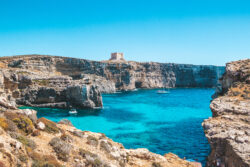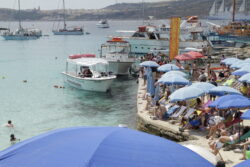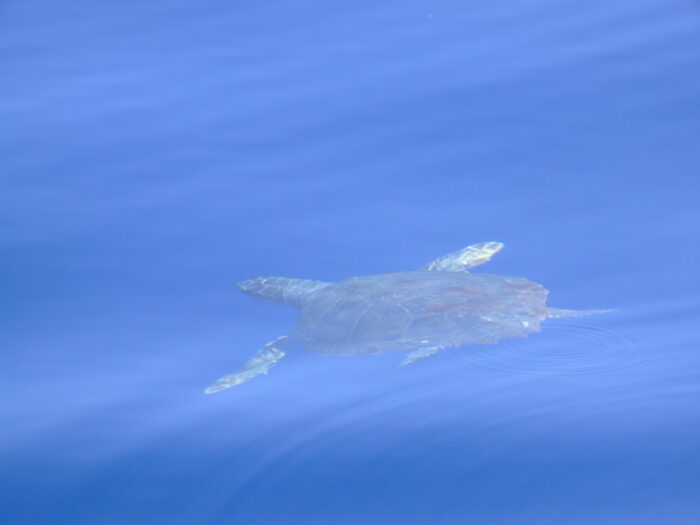Tourists. Whether you love them or hate them we’ve all been one at some point. We’ve all wanted to feel welcomed by locals, excited to explore a new area and culture, gotten a bit lost and experienced a bit of Delhi belly. But what are the costs of tourism on the environment and shared resources? What are the real benefits? In commemoration of World Tourism Day 2021, I’ll be answering these questions with a focus on Malta and what drives tourists to this small island, providing a current insight into this bustling industry.
The Mediterranean is the world’s most popular holiday region, attracting the largest flow of tourists from all around the globe. Malta has an area the size of 316km2 and a population 442,849 strong. Add to that a total of 2,753,239 inbound tourists per year (data from 2019) and you have one busy little country. August is the hottest and busiest month, with tourists coming mostly from the UK, Italy and France. 98.1% travel by air and 1.9% by sea.
Why do so many people come here?
Historically, tourism started picking up in the 1950s as the authorities sought new ways to boost the economy after the British military presence diminished. Consequently, promotion, advertising, infrastructure and improved access to hotspots was established which encouraged people to visit.
Malta is a popular travel destination for a number of reasons. The average tourist comes here for the warm, sunny climate, for an opportunity to put on their ridiculous holiday shirts, straw hats, flipflops and build up a tan at the beaches or to sip cocktails around their hotel pool. For the more adventurous, Malta offers an amazing opportunity for divers and snorkellers at the numerous marine sites and a number of dive centres are on the island to accommodate these trips.
There are plenty of wreck sites dotted around and a beautiful diversity of Mediterranean marine life as well. For the birdwatchers, Malta hosts a number of popular birdwatching sites, particularly during migration, including Għadira Nature Reserve, Buskett Woodland and Salina Nature Reserve (link to all sites recommended by BirdLife Malta can be found here). For the history buffs there are some very important historical sites with three UNESCO world heritage sites, including megalithic temples, some older than the Egyptian pyramids themselves. Culturally, there is a number of museums, cathedrals and art galleries as well as many restaurants serving traditional food and beer. In short, there is something for everyone coupled with a pleasant climate (most of the time!).
What are the benefits of this?
How is all this good for the country? Since 1996, the Malta Tourism Authority has been surveying tourist expenditure while on the island which they do by handing out forms at the airport upon arrival and asking tourists to record their expenditure, handing the form in before returning home. In 2019 there was a total expenditure of €2.2 billion, contributing 12.8% to the GDP, making tourism one of the top five contributors to the economy of Malta. Major industries benefitting from tourism include the food and drink industry, recreation, shopping, transport and accommodation – an incredible 4,128 accommodation units were listed in Malta and Gozo in 2019. As for employment, tourism accounts for a significant 25% of jobs in Malta.
And the disadvantages?
Environmental impacts from tourism can take a number of forms including reduced landscape aesthetics, reduced water availability, loss of biodiversity and land erosion from overuse of areas and development.
There is tremendous pressure on beaches in Malta since the coastal stretches are small but there is a lot of activity happening on them including sunbathers and partygoers as well as commercial activities. During the summer, when days are long, activities go on well into the night too. The effect of all this is an increase in litter, light pollution and a decrease in wildlife inhabiting these particular parts of the island. During winter, however, it is improved as beach infrastructure, including loungers and parasols, are removed and the beaches have a chance to recover and return to a more natural state.
As well as the environmental effects, although a general welcoming attitude is received from most locals, there have been increasing reports of a negative attitude towards tourists as a result of overcrowding, noise and shared resources. To put it in perspective, 5.3 visitors per inhabitant were observed in 2017.
What is being done to tackle this?
On 20 June 2016, the Maltese Government introduced an obligatory Environmental Contribution on accommodation providers in Malta. This aims to increase revenue from the tourism industry by taking a certain amount of income generated from accommodation stays which is used to improve local infrastructure in touristy areas. The Malta Tourism Authority also established an Eco-certification to encourage hotel owners to be more environmentally-aware to appeal to eco tourists. This includes energy reduction, better air quality, less water wastage and more green space. Initiatives such as Ecobikes Malta encourage greener transport while Ecomarine Malta offers environmentally conscious boat tours by having a limited capacity, use of solar panels on board and following codes of conduct related to animal sightings. A number of eNGOs, including BirdLife Malta, are constantly striving to protect the environment, fight development and achieve better conservation status for local species.
What was the effect of COVID-19?
The COVID-inflicted lockdowns during 2020 were testament to the importance of tourism in Malta as well as the rest of the world. After 10 consecutive years of growth, the summer months of 2020 saw a 77% drop in the number of inbound tourists compared to 2019 and a drop of 81% in total tourist expenditure. €251 million was lost in revenue during July alone. All this was very bad news for the industry. But what did it mean for the environment? Well, air pollution was reported to have dropped by 70% as a result of people working from home and schools being closed. People noticed that hedgehogs began roaming further and birds started frequenting local parks more since less people were using them, dolphins were spotted closer to the shore and turtles were seen nesting on beaches. The fact that 2020 saw the highest number of turtle nesting sites in recorded history in Malta is directly correlated with less people on the beaches.
What will the future look like?
Now that more people are getting vaccinated and tourism is picking up again, things are slowly returning back to normal and the pressure on the environment and resources is back on. So, what can we do about all this?
At the government level, a delicate balance must be sought between policymakers to appease tourists, locals and to protect the environment. Examples of such developments can include energy-efficient buildings, prevention of further building developments, adopting greener transport measures and strict maintenance of important historical and cultural sites. Encouraging people to visit in the winter months, not just the summer, could also ease pressure at particularly busy times.
At the individual level, choosing to visit areas at non-peak times or less well-known sites can help. Also developing a “leave no trace” camping style, taking nothing but pictures, leaving nothing but footprints and encouraging others to do the same can all help to protect the environment. Following these simple principles, the environmental impact from tourism can be lessened, people can still enjoy themselves and the industry can still flourish.
Ultimately, sustainable management is up to everyone, from the choices individuals can make to the big policy-making decisions issued by the government. Together, we can encourage the shift towards greener options in the tourism industry for a sustainable future.
By Belinda Hodder, BirdLife Malta Communications Assistant
Belinda Hodder is an Erasmus+ volunteer following a European Solidarity Corps programme
Further reading




